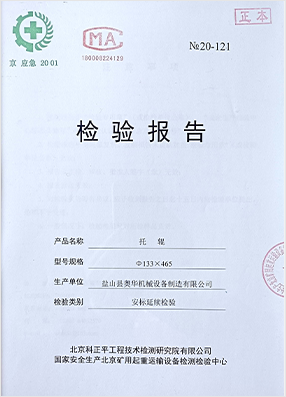 Afrikaans
Afrikaans  Albanian
Albanian  Amharic
Amharic  Arabic
Arabic  Armenian
Armenian  Azerbaijani
Azerbaijani  Basque
Basque  Belarusian
Belarusian  Bengali
Bengali  Bosnian
Bosnian  Bulgarian
Bulgarian  Catalan
Catalan  Cebuano
Cebuano  Corsican
Corsican  Croatian
Croatian  Czech
Czech  Danish
Danish  Dutch
Dutch  English
English  Esperanto
Esperanto  Estonian
Estonian  Finnish
Finnish  French
French  Frisian
Frisian  Galician
Galician  Georgian
Georgian  German
German  Greek
Greek  Gujarati
Gujarati  Haitian Creole
Haitian Creole  hausa
hausa  hawaiian
hawaiian  Hebrew
Hebrew  Hindi
Hindi  Miao
Miao  Hungarian
Hungarian  Icelandic
Icelandic  igbo
igbo  Indonesian
Indonesian  irish
irish  Italian
Italian  Japanese
Japanese  Javanese
Javanese  Kannada
Kannada  kazakh
kazakh  Khmer
Khmer  Rwandese
Rwandese  Korean
Korean  Kurdish
Kurdish  Kyrgyz
Kyrgyz  Lao
Lao  Latin
Latin  Latvian
Latvian  Lithuanian
Lithuanian  Luxembourgish
Luxembourgish  Macedonian
Macedonian  Malgashi
Malgashi  Malay
Malay  Malayalam
Malayalam  Maltese
Maltese  Maori
Maori  Marathi
Marathi  Mongolian
Mongolian  Myanmar
Myanmar  Nepali
Nepali  Norwegian
Norwegian  Norwegian
Norwegian  Occitan
Occitan  Pashto
Pashto  Persian
Persian  Polish
Polish  Portuguese
Portuguese  Punjabi
Punjabi  Romanian
Romanian  Russian
Russian  Samoan
Samoan  Scottish Gaelic
Scottish Gaelic  Serbian
Serbian  Sesotho
Sesotho  Shona
Shona  Sindhi
Sindhi  Sinhala
Sinhala  Slovak
Slovak  Slovenian
Slovenian  Somali
Somali  Spanish
Spanish  Sundanese
Sundanese  Swahili
Swahili  Swedish
Swedish  Tagalog
Tagalog  Tajik
Tajik  Tamil
Tamil  Tatar
Tatar  Telugu
Telugu  Thai
Thai  Turkish
Turkish  Turkmen
Turkmen  Ukrainian
Ukrainian  Urdu
Urdu  Uighur
Uighur  Uzbek
Uzbek  Vietnamese
Vietnamese  Welsh
Welsh  Bantu
Bantu  Yiddish
Yiddish  Yoruba
Yoruba  Zulu
Zulu Understanding the Role and Functionality of Conveyor Head Pulleys in Material Handling Systems
Understanding the Conveyor Head Pulley A Key Component in Material Handling Systems
In the realm of material handling and conveyor systems, the conveyor head pulley stands out as an essential component that plays a critical role in the operational efficiency and effectiveness of these systems. A conveyor head pulley is typically located at the discharge end of a conveyor belt and serves multiple functions that enhance not only the functionality but also the safety and longevity of the entire conveyor system.
What is a Conveyor Head Pulley?
The conveyor head pulley is essentially a cylindrical drum that rotates to drive the conveyor belt forward
. As the belt wraps around the pulley, it creates the necessary friction to propel the belt in a continuous cycle, allowing for the transportation of materials over various distances. This component is usually equipped with a drive mechanism, which often includes a motor or a system of gears that provides the necessary power to move the pulley, and consequently, the belt.Functions of the Conveyor Head Pulley
1. Driving Force The primary function of the head pulley is to act as the driving force of the conveyor system. The rotation of the pulley moves the conveyor belt, facilitating the movement of materials from one point to another. This is crucial in industries such as mining, food processing, and logistics, where efficient material transport is vital.
2. Discharge Point As the name suggests, the head pulley is located at the end of the conveyor where materials are discharged. The design of the pulley often allows for smooth material release, minimizing the chances of spillage and ensuring that products are delivered accurately to downstream processes.
conveyor head pulley

3. Belt Tensioning The head pulley also plays a significant role in tensioning the conveyor belt. Proper tension is necessary to maintain the belt’s grip on the pulley, ensuring that there is sufficient friction for effective operation. Insufficient tension can lead to slippage, while excessive tension can result in undue wear and tear on both the belt and the conveying system.
4. Support and Stability Beyond its role in driving and discharging materials, the head pulley provides structural support to the conveyor belt. It maintains the alignment of the belt and ensures that it operates smoothly along its intended path. Proper alignment is essential to prevent wear and to reduce maintenance costs associated with misalignment issues.
Materials and Maintenance
Typically, head pulleys are constructed from robust materials that can withstand harsh environmental conditions, such as abrasion from transported materials and exposure to various weather elements. The selection of material is fundamental for longevity and overall performance.
Regular maintenance of the head pulley is essential to ensure its optimal function. This includes inspecting the pulley for any signs of wear, ensuring that the bearings are lubricated, and checking for alignment issues. Preventive maintenance can dramatically extend the life of the conveyor system, enhance its efficiency, and reduce unexpected downtimes.
Conclusion
In conclusion, the conveyor head pulley is a crucial component of any conveyor system, impacting its efficiency, safety, and durability. With its multiple roles encompassing the driving force, discharge point, tensioning, and support, understanding the mechanics and maintenance of head pulleys is key for industries relying on conveyor systems for material handling. Investing in high-quality head pulleys and adhering to a rigorous maintenance schedule will undoubtedly yield long-term benefits, ensuring that operations run smoothly and effectively.
-
Revolutionizing Conveyor Reliability with Advanced Rubber Lagging PulleysNewsJul.22,2025
-
Powering Precision and Durability with Expert Manufacturers of Conveyor ComponentsNewsJul.22,2025
-
Optimizing Conveyor Systems with Advanced Conveyor AccessoriesNewsJul.22,2025
-
Maximize Conveyor Efficiency with Quality Conveyor Idler PulleysNewsJul.22,2025
-
Future-Proof Your Conveyor System with High-Performance Polyurethane RollerNewsJul.22,2025
-
Driving Efficiency Forward with Quality Idlers and RollersNewsJul.22,2025





























